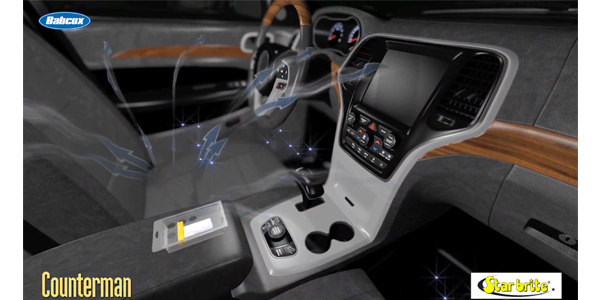Hello everyone and welcome to the latest edition of “Ask the Expert,” where parts professionals ask the questions and we find the answers.
One question we hear all the time is how to assist customers who are looking for a truly effective car-deodorizing product.
It’s safe to say that all your customers want their cars to smell better. They might need to deodorize to get top dollar when they sell or trade it. Perhaps the interior has a musty odor caused by a water leak or flooding. Maybe family and friends complain about foul smells from cigarettes or gym clothes. By helping customers realize just how easy it is to actually remove odors instead of just covering them up, you can gain extra sales year-round.
Hanging or aerosol air fresheners use perfume to temporarily mask foul smells, but when the perfume wears off, the odor is still there. That’s why your customers might want to consider an odor-control product utilizing EPA-registered ClO2 technology to eliminate the bacteria that causes the odor. The most effective odor-removing systems use a deep-penetrating vapor to thoroughly treat every inch of the interior, permanently removing odors caused by smoke, food, sweaty gym clothes or pets in four to six hours.
When your customers see how well a ClO2 treatment works to remove even the toughest odor, they’ll be back for more. That’s good for their vehicle and good for your business.
If you have a question you’d like us to answer, send us an email at [email protected]m. Thanks for watching, and we’ll see you next time!













